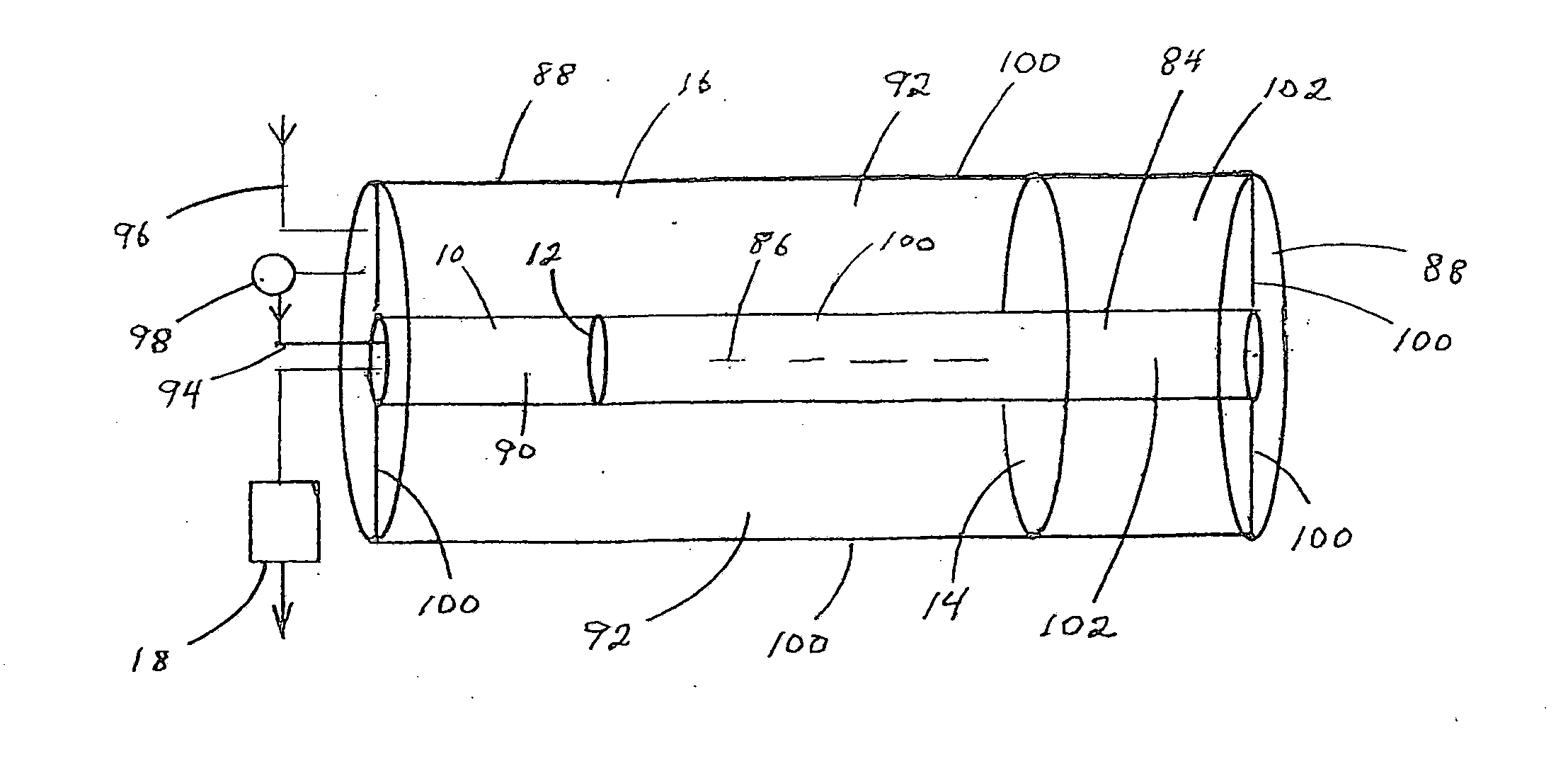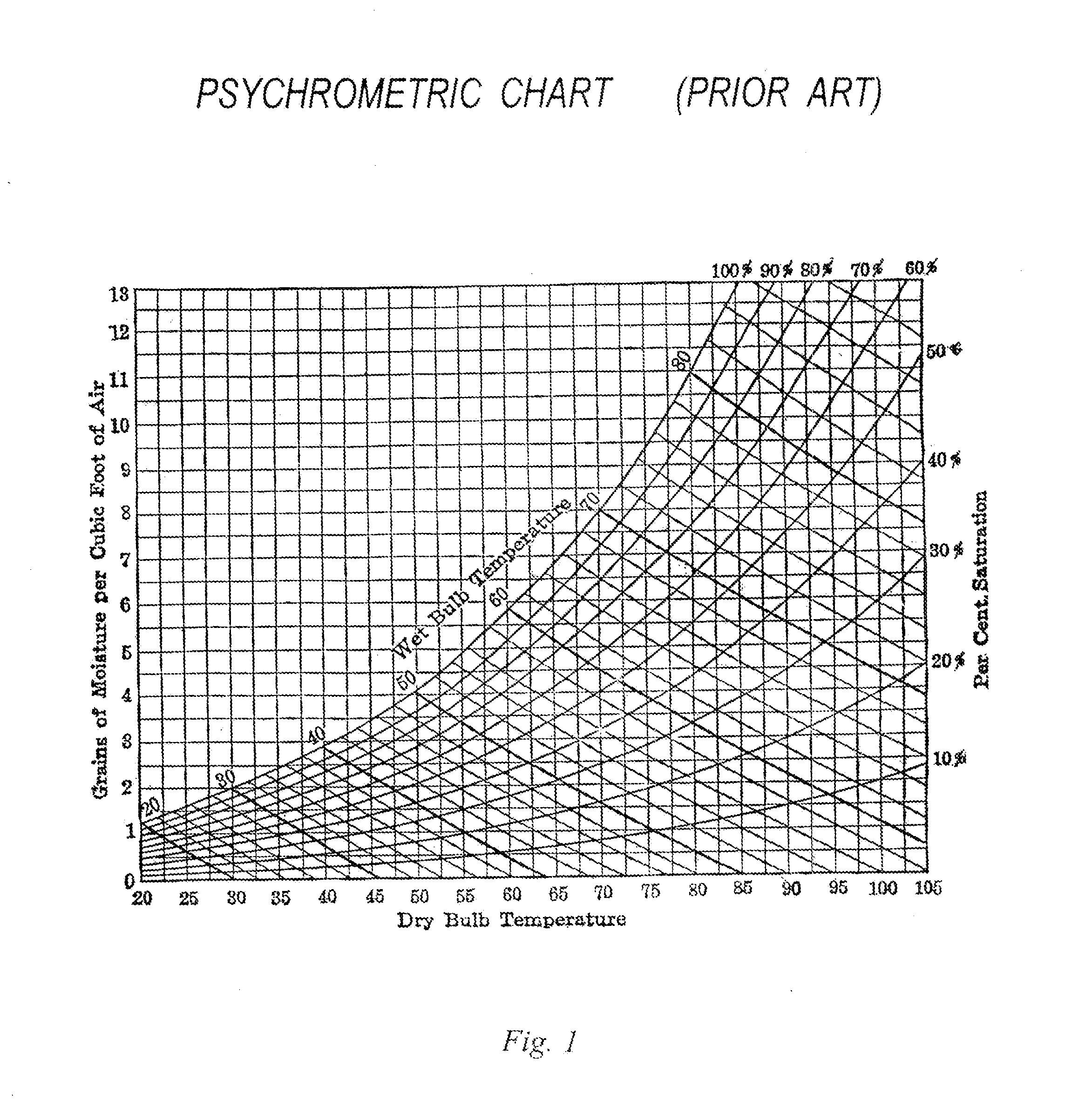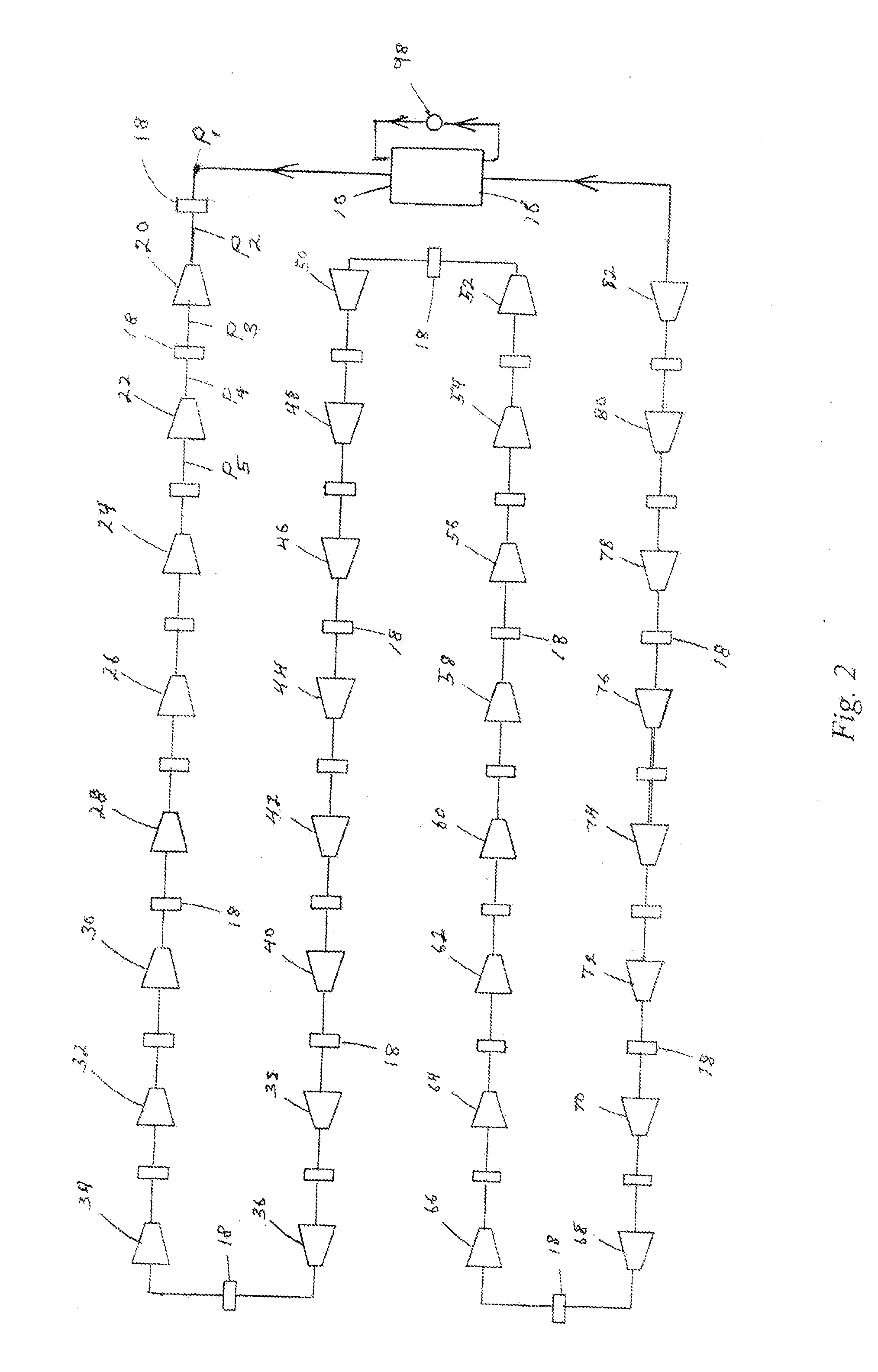Closed-cycle cryogenic engine and operating method for propelling vehicles and generating electricity
a closed-cycle, cryogenic engine technology, applied in machines/engines, natural sources of heating, lighting and heating apparatus, etc., can solve the problems of inability to use engines, impracticality, failure of previous attempts to harness natural heat energy and convert it into mechanical work with high power densities, etc., to extract a large amount of natural heat, the effect of huge propulsive power
- Summary
- Abstract
- Description
- Claims
- Application Information
AI Technical Summary
Benefits of technology
Problems solved by technology
Method used
Image
Examples
Embodiment Construction
[0022]In the preferred embodiment of the invention, a closed cycle, non-condensing, cryogenic engine is presented using compressed hydrogen gas as its constant-phase working fluid, and the heat energy in the natural environment as its high-temperature heat reservoir. The natural heat energy of the environment is extracted by isothermally compressing the gaseous working fluid at a sub-ambient temperature to 600 Bar by absorbing the heat of compression by evaporating water at sub-ambient temperature and feeding the compressed sub-ambient working fluid into a heat exchanger maintained in thermal contact with large amounts of flowing atmospheric air at natural ambient temperature where it is isobarically heated to ambient temperature TH. The heated compressed gas is withdrawn from the heat exchanger and fed into the first isentropic cryogenic expander of a large plurality of serially connected cryogenic expanders having very low pressure ratios. The first expander expands the very high ...
PUM
 Login to View More
Login to View More Abstract
Description
Claims
Application Information
 Login to View More
Login to View More - R&D
- Intellectual Property
- Life Sciences
- Materials
- Tech Scout
- Unparalleled Data Quality
- Higher Quality Content
- 60% Fewer Hallucinations
Browse by: Latest US Patents, China's latest patents, Technical Efficacy Thesaurus, Application Domain, Technology Topic, Popular Technical Reports.
© 2025 PatSnap. All rights reserved.Legal|Privacy policy|Modern Slavery Act Transparency Statement|Sitemap|About US| Contact US: help@patsnap.com



